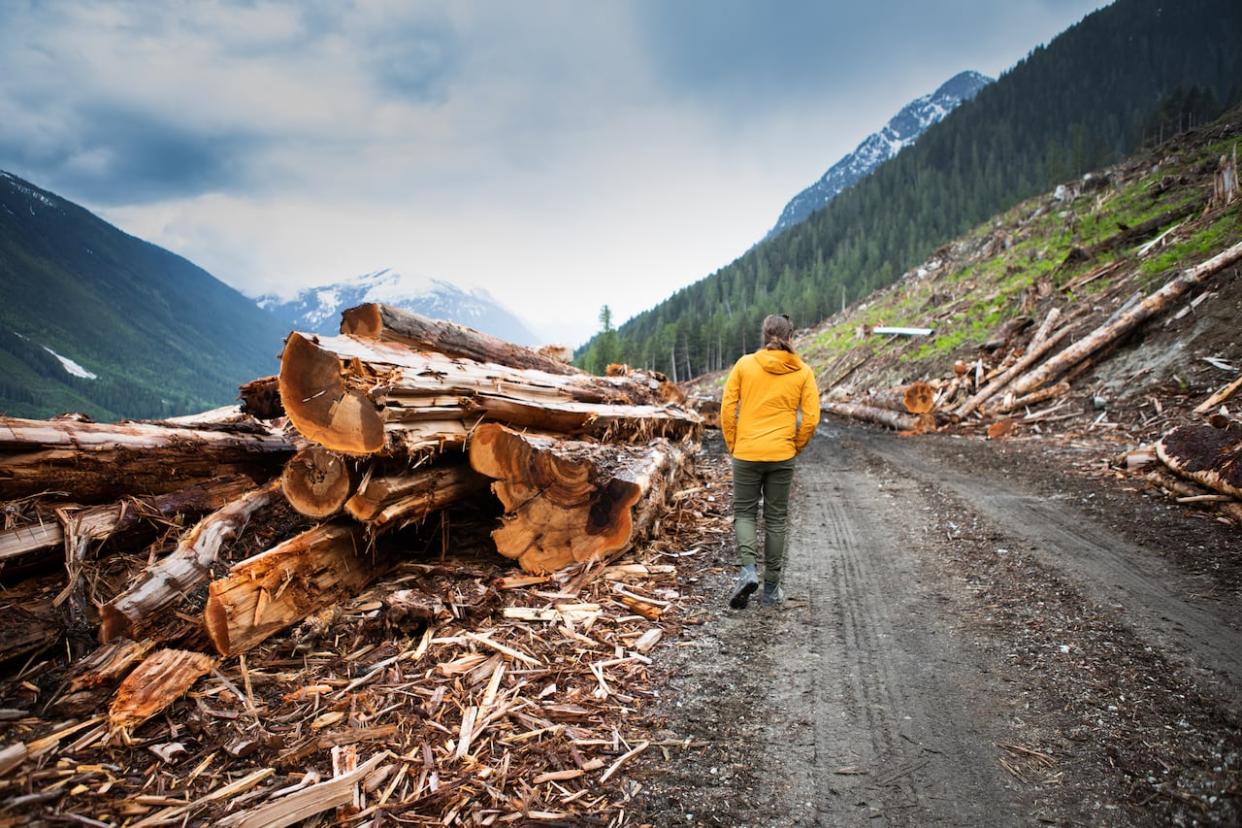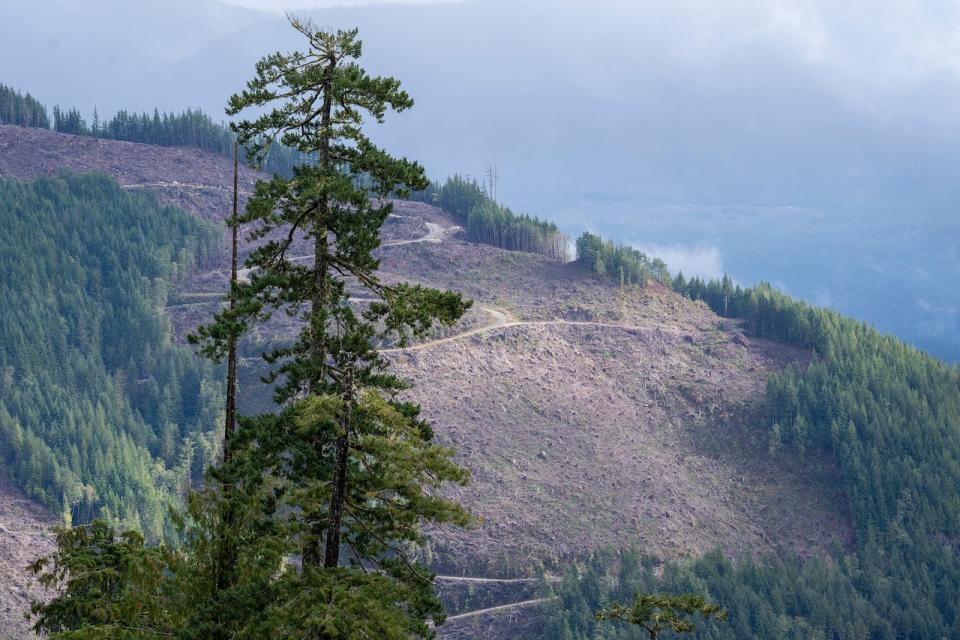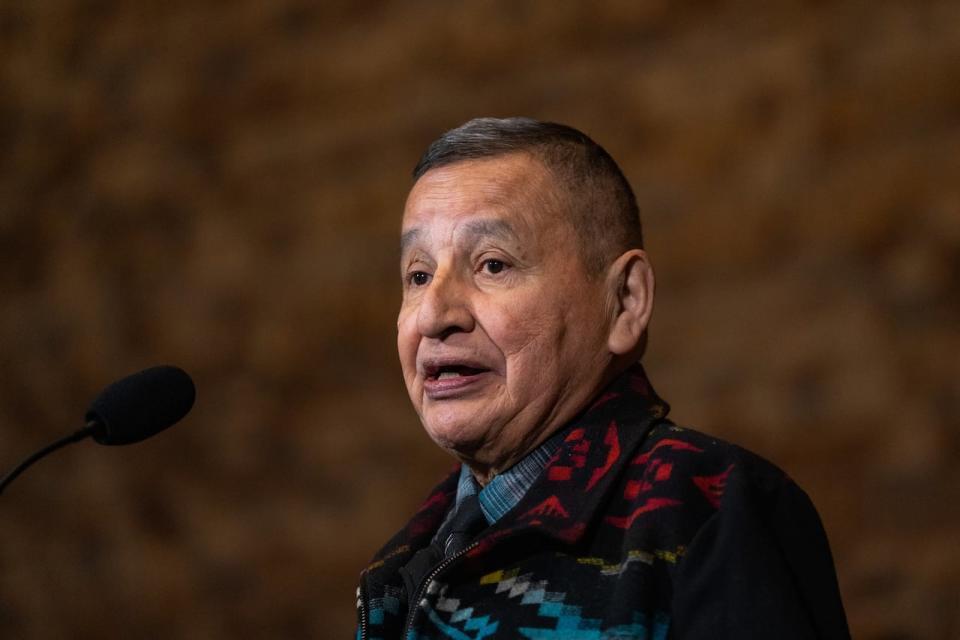Environmental groups critical of new B.C. government old-growth logging report

The B.C. government has released a report on its progress protecting old-growth forests, but some First Nations and environmental groups say the plan released Friday falls short.
The report comes three years after the B.C. government committed to policies to conserve old-growth trees, and includes updated timelines on protections for old growth.
Now, environmental groups are urging the government to accelerate its protections and issue emergency logging bans in old-growth forests.
Sarah Korpan, B.C. government campaign specialist with non-profit Ecojustice, said she was disappointed to see the province change its timeline for implementing enhanced old-growth protection.
"This highlights a pattern of behaviour from this government of delaying the action required to meaningfully protect at-risk species and ecosystems, including old growth forests," she said.

The province committed to deliver on 14 recommendations, including enhanced mapping and monitoring of old-growth forests. (Jonathan Hayward/The Canadian Press)
Old-growth trees, according to the province, are those trees that are at least 140 years old in B.C.'s Interior, and 250 years old on the coast.
In 2020, the province committed to a three-year action plan to protect old-growth forests which included protecting at-risk old-growth forests and policies to protect biodiversity and ecosystems.
The province committed to deliver on 14 recommendations, including enhancing mapping and monitoring of old-growth forests, consulting Indigenous leaders and deferring development in old forests.
More than three years later, the province says in its new report it has implemented eight recommendations, and has extended deadlines to deliver on the remaining six recommendations.
Now, the province has committed to finalizing its framework for stewarding land and water by 2025, along with producing a plan to address the ecological risks of forest service and other resource roads.
It will also run a compliance program until 2029 to ensure its orders on old-growth areas are followed.
First Nations urging faster action
Grand Chief Stewart Phillip, president of the Union of B.C. Indian Chiefs, said in a press release the action plan is a "welcome step," but the B.C. government must accelerate its timeline.
"We are pleased that this government shares our concern for old-growth trees," he said. "We must take immediate steps to stop the logging of at-risk old-growth on the ground."
In its report, the B.C. government said after consulting with First Nations, it has temporarily protected 2.4 million hectares of old forest by designating it as what's known as a deferral area.

Grand Chief Stewart Phillip, president of the Union of B.C. Indian Chiefs, said in a statement that the government should accelerate its timeline for protecting old-growth forests. (Ethan Cairns/The Canadian Press)
The process, which the province introduced in 2021, prevents logging in an area for two to four years. Korpan said what happens to the trees in these deferral areas once that period ends is unclear.
Tegan Hansen, senior forest campaigner for Stand.Earth, said the government's plan lacks a commitment to bring a long-term end to logging in old-growth forests.
"What we can't do is let these really vulnerable, irreplaceable stands of old-growth be cut down," Hansen said. "We really need to look at the urgency from the province and ask our elected officials to take a stand."
Jens Wieting, the senior policy and science adviser for Sierra Club B.C., says that the last time the province collected data on rates of old-growth logging was in 2022.
"We need more transparency. We need more up-to-date information," he said. "The last data available for 2022 shows over 160 soccer fields' [worth] of old growth forests getting logged every day."


